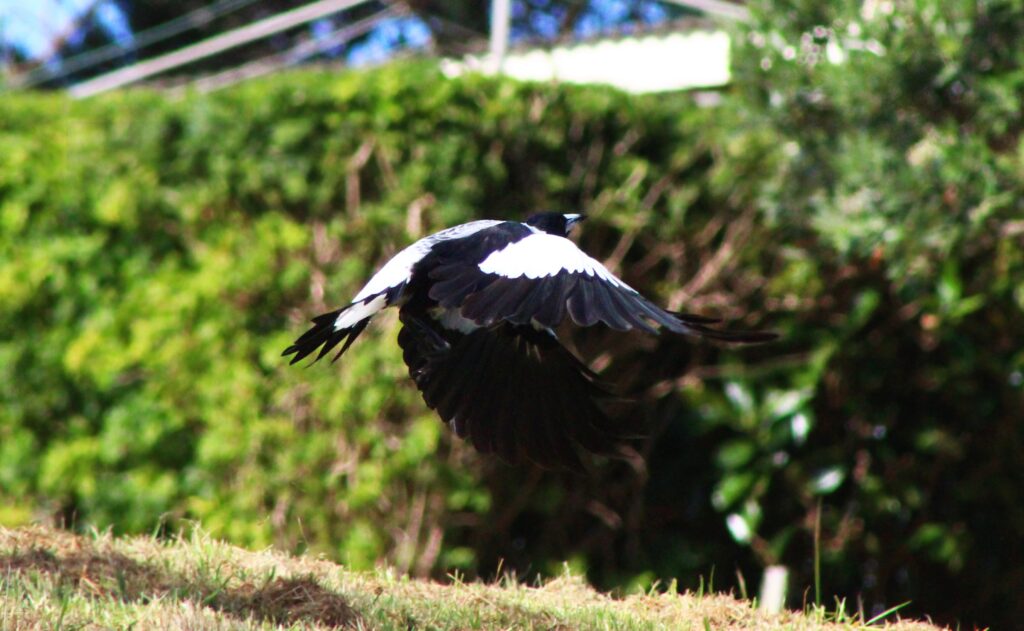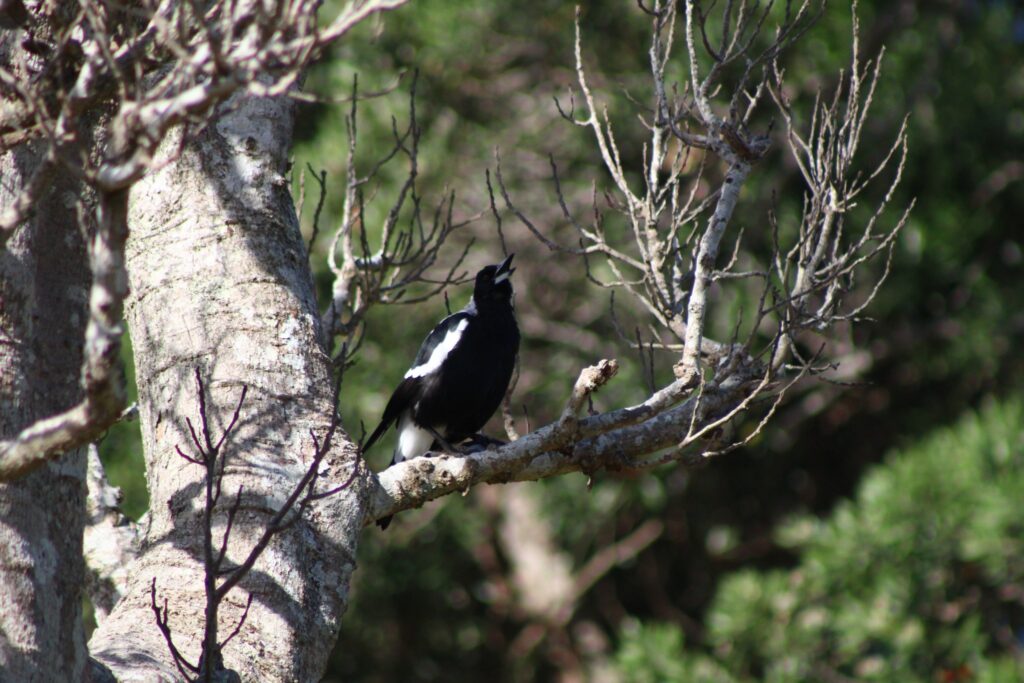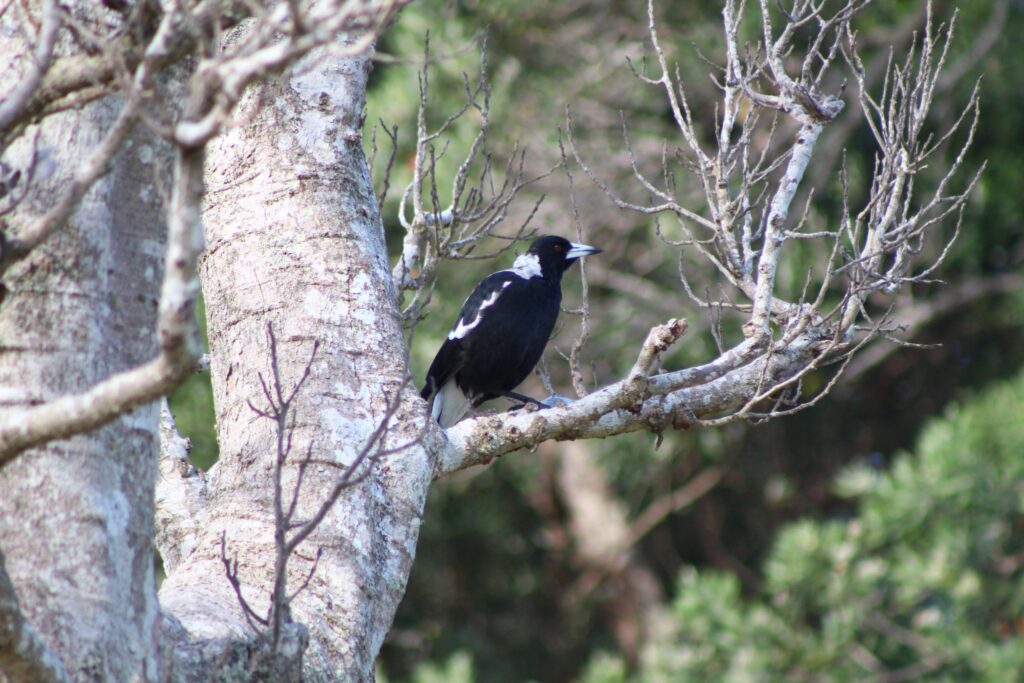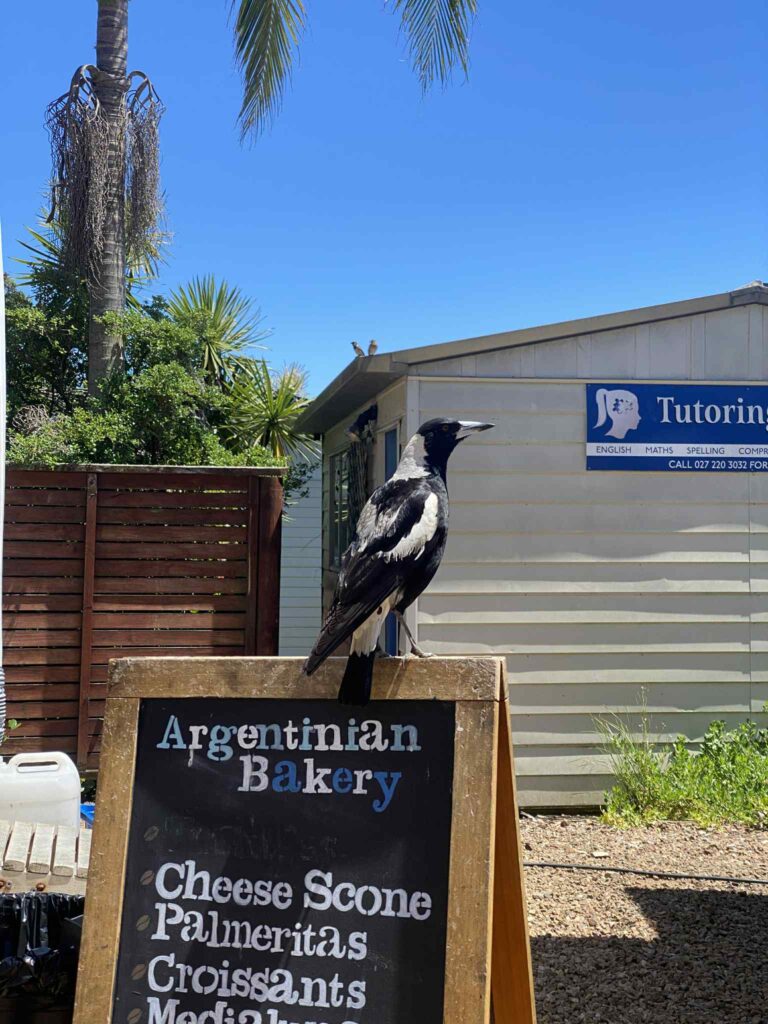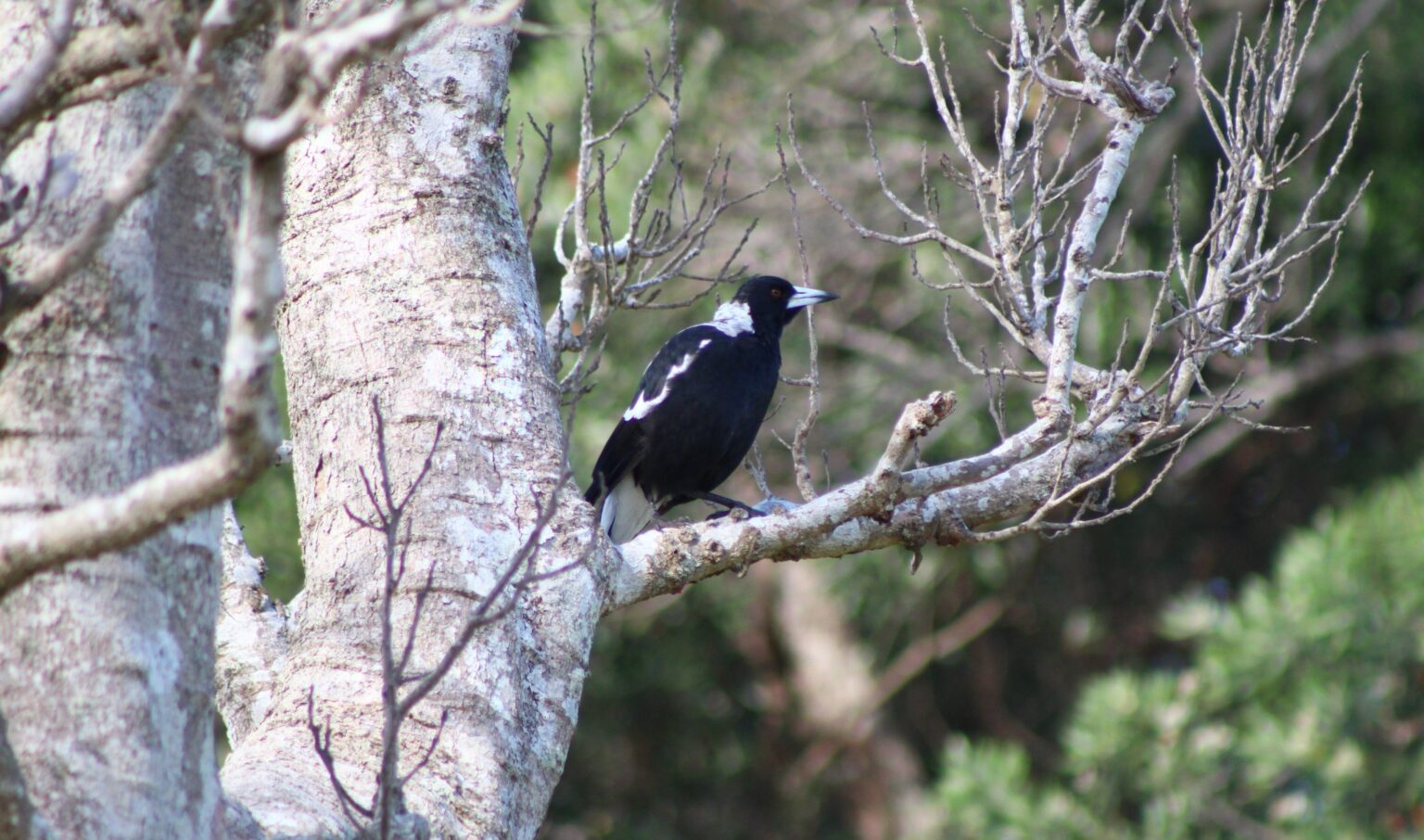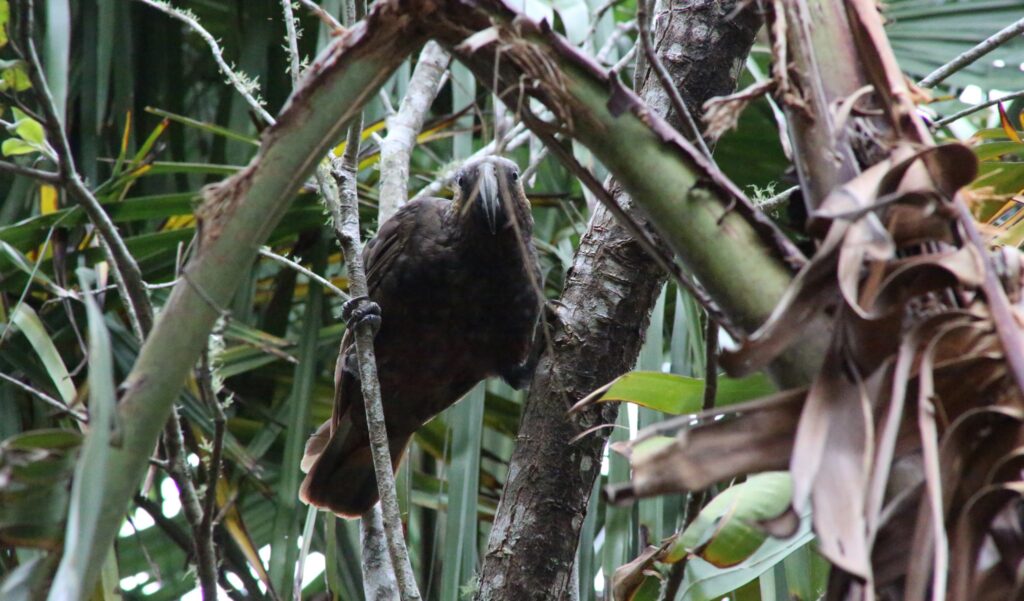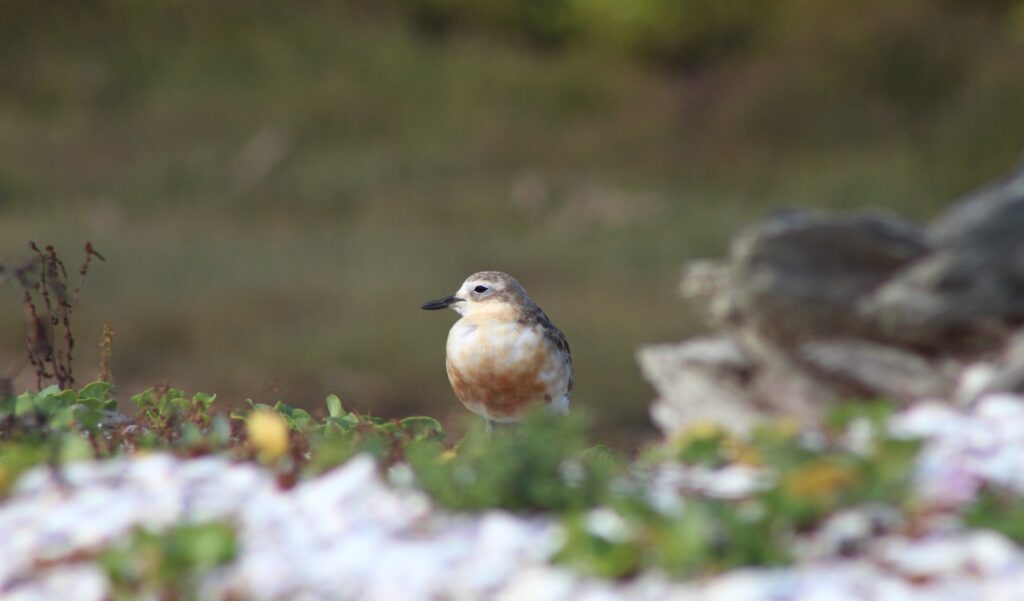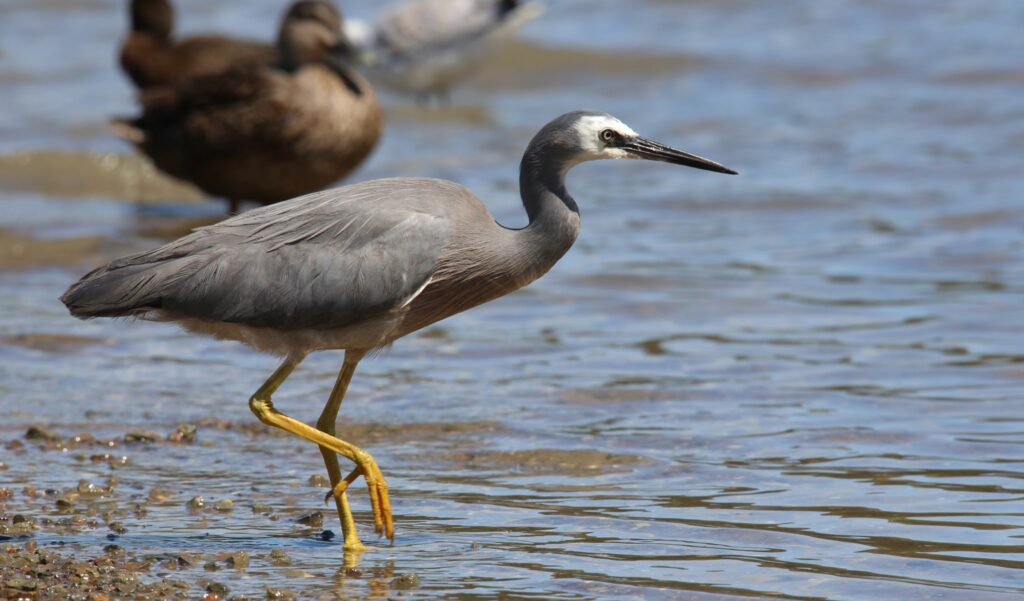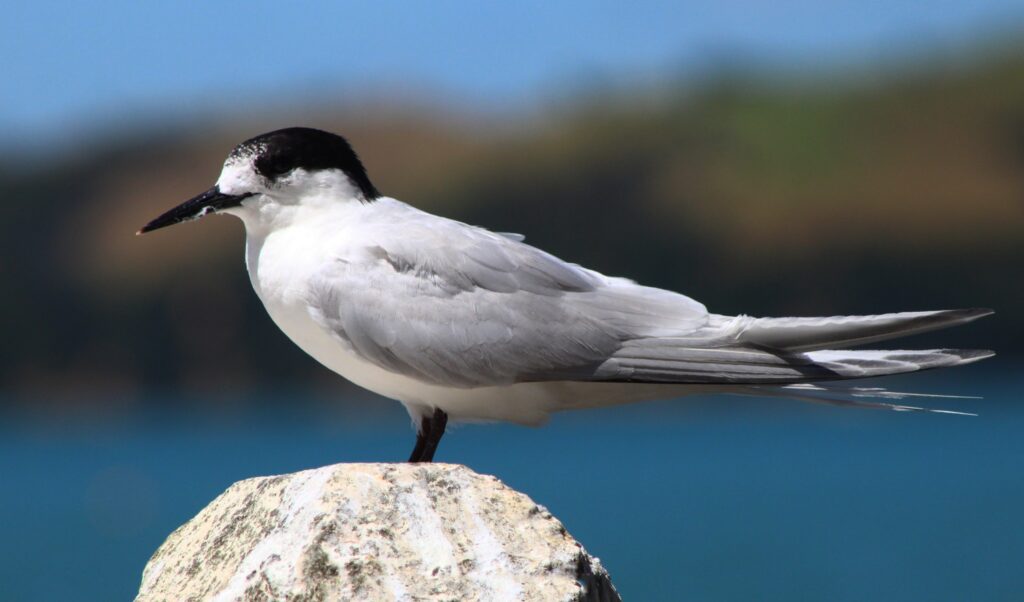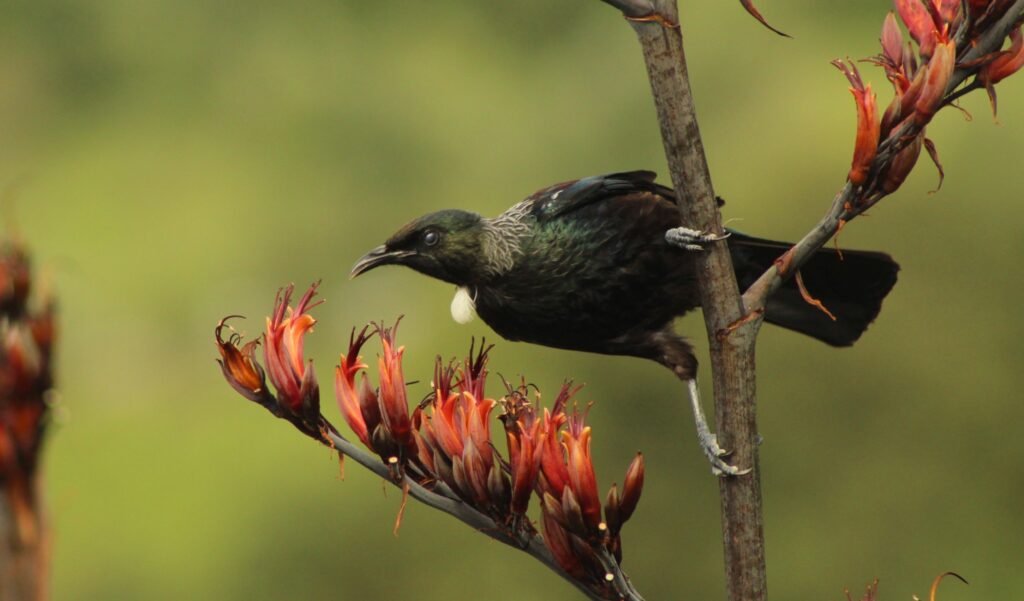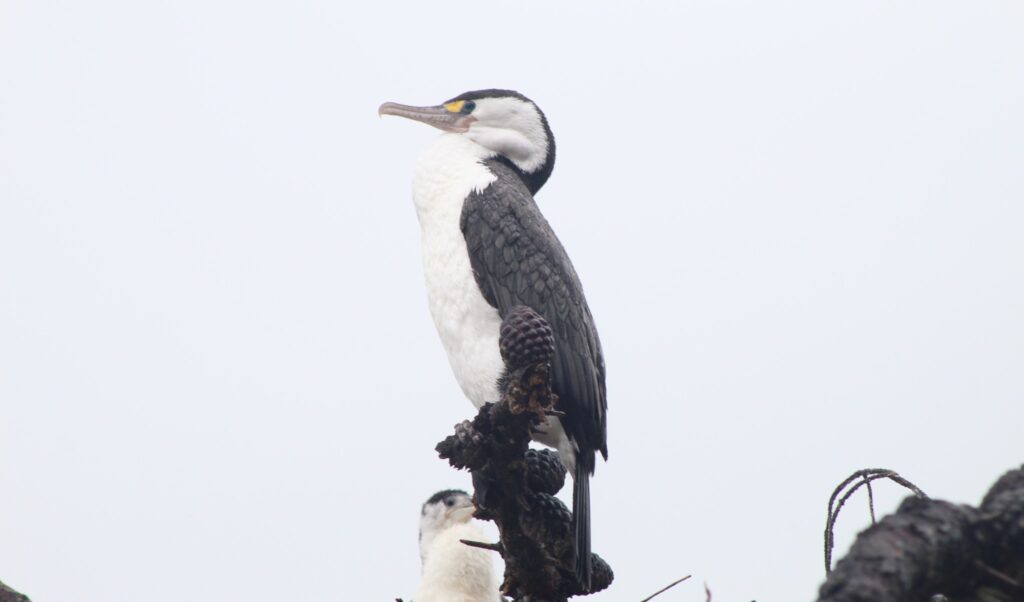Order) Passeriformes
Family) Artamidae
Species) Introduced
Length) 41 cm
Weight) 350 g
Other names) magpie, white-backed magpie, black-backed magpie, makipae
Threats) sparrowhawks and goshawks
Identification
The Magpie is a large black-and-white songbird, It was introduced from Australia. It can be found on Waiheke around farmland and large grass reserves.
This familiar large songbird is similar in size to a crow or a New Zealand pigeon. The white-backed form tyrannica is the largest of the sub-species.
The male has a white hind-neck, mantle, rump and shoulder patches. The upper two-thirds of the tail and under-tail coverts are also white. The rest of the plumage is black, with a blue iridescence. The female is similar, but the mantle is grey, and the black parts of the plumage are less iridescent. Both sexes have a blue-grey bill with a dark tip, and red eyes.
The male takes several years to attain full adult plumage; after the second moult it resembles an adult female. Some white appears on the mantle after the third moult, and the remainder after the fourth moult. The juvenile is mottled grey on the under-surface.
The black-backed magpie is similar to the white-backed forms, but with a black mantle. The female can be identified by the presence of some grey on the lower hind-neck. The two subspecies interbreed, resulting in offspring with a varying amount of black on the mantle, ranging from a few feathers to a narrow band.
The Australian magpie has been widely implicated in the predation of native birds and their nests. However, magpies do occasionally kill other birds, mostly smaller species.
Magpies are well-known for their propensity for attacking people by dive-bombing during the breeding season. However, this usually only lasts until shortly after the chicks fledge.
Breeding
Magpies breed early, commencing nest-building in late July, and are normally single brooded.
The bulky nest is built of twigs, roots, and man-made materials including wire, and lined with hair and wool. Usually located in the crown or side-branches of tall trees, especially pines, macrocarpas and gums. Native trees such as tawa and beech are also frequently used.
The usual clutch consists of 3-4 eggs, and the resulting chicks are fed by both parents for 4-5 weeks until fledging.
Eggs are highly variable; ground colour various shades of grey, green, brown or blue or combinations of these colours. Marked with spots, streaks, blotches, smudges and hair-lines of various shades or brown or black. Can be unmarked.
Food
Australian magpies mainly feed on invertebrates, taken mostly from the ground. A large proportion of the diet consists of earthworms in winter, but at other times of the year they feed mainly on insects, including pest species.
They particularly favour the caterpillars of the porina moth, which are extracted from their tunnels in the ground. Other invertebrates eaten include army worm caterpillars, crickets, wasps, spiders, stick insects and snails. In late summer magpies frequently feed on large cicadas when these are available.
Occasionally magpies consume beetles ,lizards, mice, small birds and their eggs and chicks. Seeds and grain may be taken occasionally.
Waiheke Locations
Waiheke Grass Reserves – I have spotted the magpie searching for food by the Onetangi reserve, they are also sometimes spotted swooping at hawks when they get to close.
Farm land Waiheke – spotted searching for food and perching on fences in orapiu, church bay areas.
The Magpie are flying birds so they can really be anywhere on Waiheke but not just Waiheke they are all over New Zealand, these are just areas I’ve spotted them and photographed.
References
https://www.nzbirdsonline.org.nz/ (Website used for journalistic purposes)
Gallery

